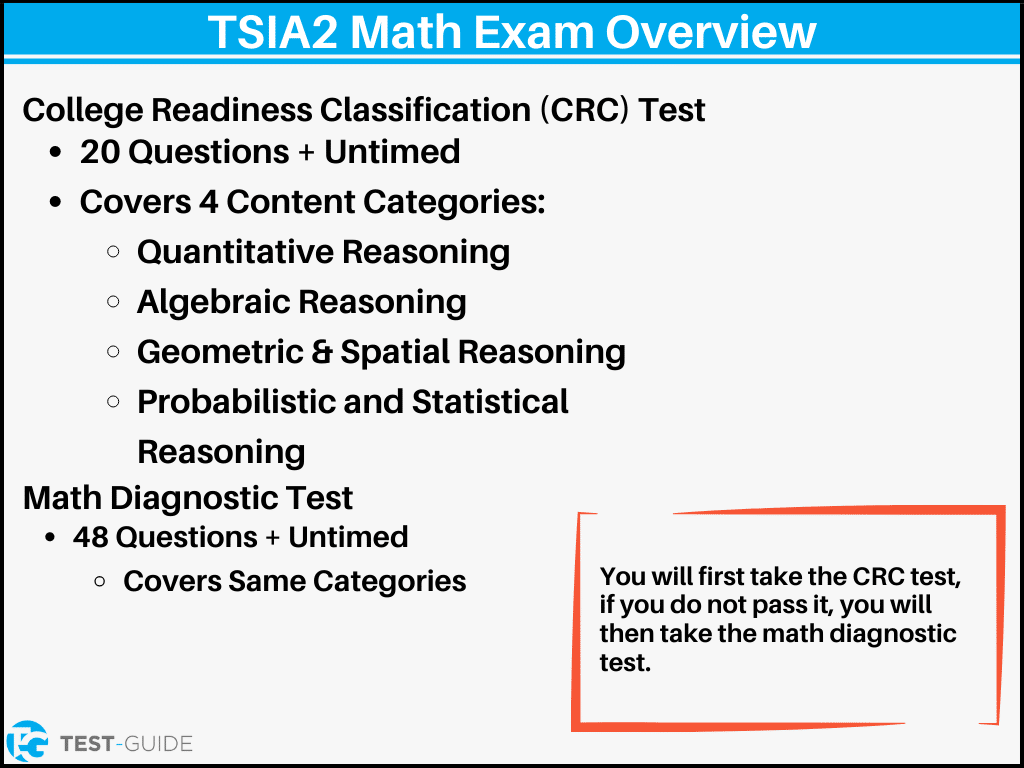Take a TSI math practice test to ensure you pass the math portion of your TSIA2 exam.
Our practice exams include detailed answer explanations to help you learn why an answer was correct or incorrect. Start preparing for your TSI math test below!
TSI Math Practice Test
If you want to prepare for another section of the TSI, visit our TSI practice test home.
TSI Math Prep
Prepare for the TSI math section with our partner, BoostPrep. They offer 5 full-length exams, 600+ questions, and study guides.
TSI Math Overview
The TSI math test is designed to test your abilities in mathematics. The categories you will be tested on include:
- Quantitative Reasoning: Includes ratios, proportions, percentages, and identifying/interpreting linear equations.
- Algebraic Reasoning: Includes solving equations, evaluating functions, and solving algebraic problems.
- Geometric & Spatial Reasoning: Includes converting units within measurement systems, solving geometric problems, transformations, and trigonometry.
- Probabilistic & Statistical Reasoning: Includes classifying and representing data, probability, and computing data.
There are 2 potential math exams you will be asked to take:
College Readiness Classification (CRC) Math Test
- Questions: 20
- Time Limit: Untimed
Math Diagnostic Test
- Questions: 48
- Time Limit: Untimed
You will take the CRC test first. If you do not score 950+ on the CRC test, you will be asked to take the diagnostic test.

If you feel comfortable with the TSI math questions, visit our free TSI practice test home to find more practice exams for other sections.
TSI Math Test FAQs
How many questions are on the TSI math exam?
- TSI CRC Math Test: 20 Questions
- TSI Diagnostic Math Test: 48 Questions
Is there a time limit on the TSI math exam?
There is no time limit. You can even stop and take a break if you want. You have 14 days to complete the exam.
What score do I need to pass the TSI math exam?
You will need to score 950+ on the CRC portion of the exam. If you score lower, you will need to take the diagnostic portion of the exam.
You will need to score a 6 on the diagnostic exam if you take it.
What should I study for the TSI math test?
You should have the following topics on your TSI math study guide:
- Quantitative Reasoning
- Algebraic Reasoning
- Geometric & Spatial Reasoning
- Probabilistic & Statistical Reasoning
Can I use a calculator on the TSI math test?
You will not be allowed to use your own calculator. There will be some questions that require a calculator – when that happens, an electronic calculator will appear on the screen.

